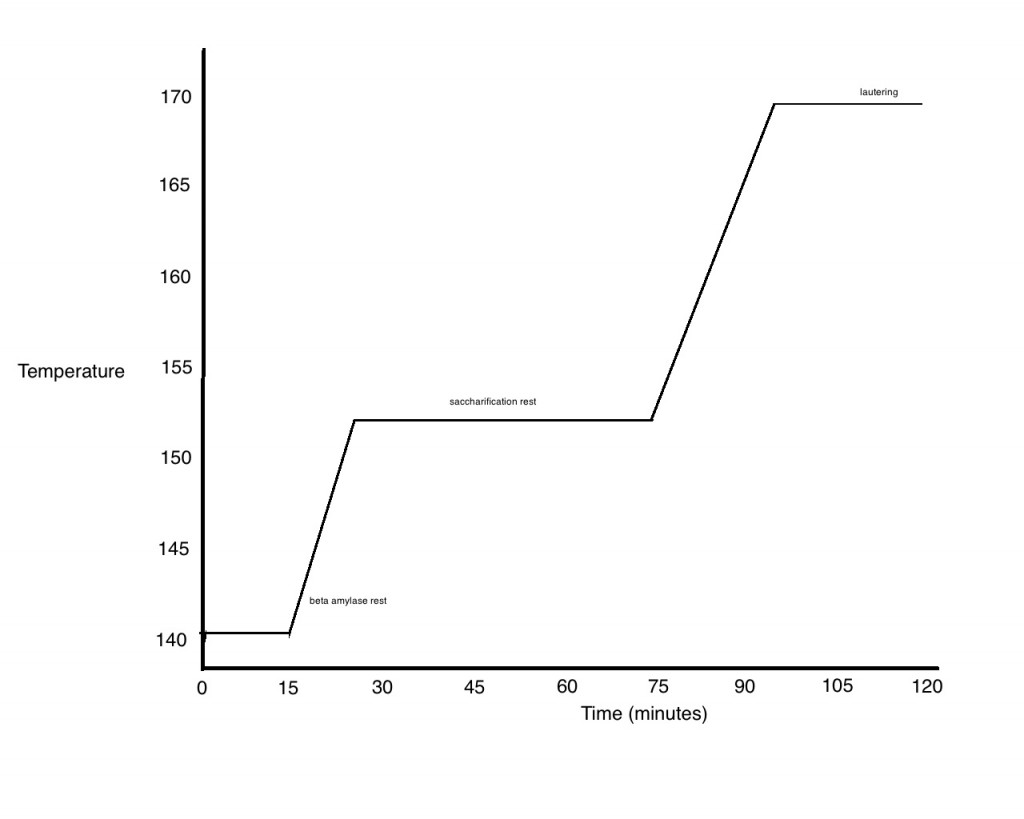This is the second half of an article that was posted yesterday.
After the beta amylase rest (140–145 °F/60–63 °C), and the temperature ramp up into the saccharification range (148–162 °F/64–72 °C), the rest of wort production is almost identical to a single infusion mash. One difference is that you can choose a slightly higher temperature for your main mash rest. If you were brewing a dry beer and using a single infusion mash, you would likely rest in the 148–151 °F (64–66 °C) range. If you were brewing a somewhat drier beer, you could in the 152–154 °F (67–68 °C) range after the beta amylase rest. Because you’ve already rested at lower temperatures (favoring beta amylase), your main rest can be slightly higher, favoring alpha amylase a bit more, comparatively.
Both alpha and beta amylase will be active at both rests, just to varying degrees. In the beta amylase range, the activity of alpha amylase is still substantial (albeit less than it will be at the higher temperature of the saccharification rest). In the saccharification rest, beta amylase activity continues, although it will decline fairly quickly over time. Still — since it has already been working for a period of time at the lower rest — there is less substrate for it to deal with. [Read more…]



Recent Comments